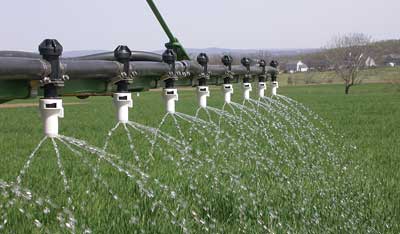If timely moisture has improved yield potential and if applied nutrient was not enough to meet this new yield potential, canola fields may benefit from a top dress of nitrogen.
You have a choice between dry urea or liquid UAN. Liquid UAN dribbled on the surface is less prone to losses than dry urea broadcast on the surface, but both applications require rain soon after application to move fertilizer into the soil and limit volatilization. (Agrotain helps to minimize these losses.)
Top-dress fertilizer is much more efficiently taken up by the roots, not by the leaves, so applications must reach the soil surface, ideally in a concentrated band.
If broadcasting granular, apply when leaves are dry to make sure prills roll off onto the ground and don’t cause leaf burn.
If using liquid, the ideal is to apply when leaves are moist from early dew or a light rain so liquid nitrogen fertilizer runs off quickly. Applying when hot and dry can increase absorption of liquid into the plant, increasing the amount of burn. Consider adding some extra water to the tank in these conditions if waiting is not an option.
When applying with the sprayer, use dribble applicators designed specifically for fertilizer. Pesticide nozzles increase leaf coverage and the potential for plant damage. The dribble system reduces this risk, and also minimizes volatilization and immobilization by reducing the amount contacting crop residue. Use some pressure to drive the stream to the ground.
Fertilizer dribble options for the sprayer:
1. Streambars or dribble bars are long bars — 12” to 15” or so each — with 4 holes along the length. They attach to each sprayer nozzle point, with the bar designed to reduce the distance between streams. Advantage: Streams drop straight down so spray patterns are unaffected by boom height. Disadvantages: They are more expensive than the second simpler option, and they are more likely to break if the boom hits the ground.
2. Fertilizer nozzle bodies with 3-4 streams fanning out in different directions from a single point. (See the photo at the top.) Advantage: They tend to be cheaper than streambars or dribble bars. Disadvantage: Patterns can overlap more as boom height increases.
John Heard, crop fertility specialist with MAFRI, recommends this article from the U.K. for a review of the two choices.
Noteworthy:
—UAN must reach the soil surface. UAN applied in no-till situations with high trash cover can be absorbed by the residue and be unavailable to the crop. That is one reason why a concentrated band works better than full ground coverage.
—Windy conditions may disrupt the streams and lead to increased plant coverage and potential for damaging greater leaf area.
Click here for more top up tips for nitrogen and sulphur.

